What does Asbestos mean? Origin, Type, Uses and Health Risks
Asbestos is a group of minerals which all have a fibrous crystal habit. Asbestos is highly durable and has a high melting point. Its fibrous structure gives it strength and makes it a useful building material.
Origin of Asbestos
Asbestos minerals most commonly come from the serpentine and amphibole classes of minerals which have a fibrous texture. This texture is created by long needle-like mineral grains. Asbestos minerals are silicate minerals which gives them generally high heat resistance.
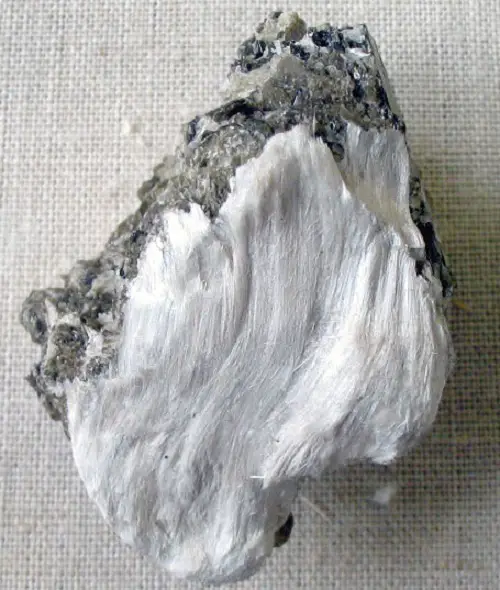
Types of Asbestos
Asbestos properties will vary based on the mineral from which it is derived. Common asbestos minerals include actinolite, tremolite, crocidolite, anthophyllite, and chrysotile. The most common mineral from which asbestos originates is chrysotile, a serpentine mineral. The asbestos from chrysotile is longer, curlier, and more flexible than other forms of asbestos. Chrysotile is the only common asbestos mineral that is serpentine. The other common forms of asbestos are mostly varieties of amphibole.
Uses of Asbestos
The properties of asbestos make it useful for insulation and other industrial uses. It is also used in roofing, floor tiles, and the production of gaskets. Because of the property of being resistant to fire, many ancient civilizations such as the ancient Greeks had a fascination with the substance. It is known to have been used in the ancient world for wicks in candles and to make shrouds for burial.
Health Risks of Asbestos
Asbestos particles can be separated from the asbestiform parent mass and inhaled. Because of the needle-like shape of asbestos, if asbestos gets into the lungs, it can cause irritation and possibly damage the tissue. It can also cause lung cancer. Because of this, asbestos is being phased out of use in construction and insulation.
What is Fiberglass? Origin and Uses
Fiberglass is a fibrous material used for insulation and construction in several sectors.
Origins of fiberglass
Fiberglass is essentially glass that has been molten and then accelerated through bundles of very small holes to create very thin slivers or threads of glass. Once this thread of glass has been made, it can be woven into a more consolidated material or left as a disorganized, wool-like mass that is often used as insulation. Fiberglass was invented around 1933 by Russel Games Slayter.
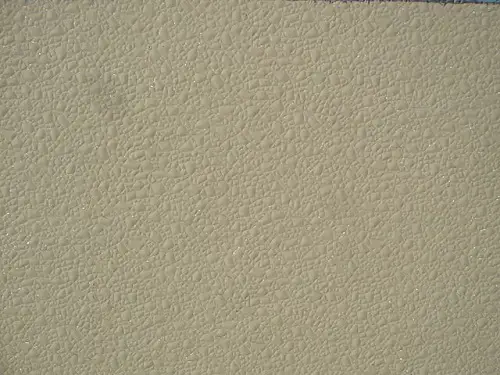
Uses of fiberglass
More consolidated fiberglass is used in the making of hard surfaces in buildings and containers. The less organized, wool-like fiberglass is more often used for insulation. Fiberglass can also be used in the construction of circuit boards.
Similarities between Asbestos and Fiberglass
Asbestos and fiberglass are both fibrous materials that can be woven into materials that are very strong and durable. They are also both silicate in composition. Furthermore, they are both used for insulation in buildings.
Differences between Asbestos and Fiberglass
Although there are clear similarities between asbestos and fiberglass, there is also a handful of differences.
- Asbestos is derived from silicate minerals and, thus, is a crystalline substance. The reason it forms long needles is because that is its crystal form or habit. Fiberglass, on the other hand, is made of silicate glass that that has no ordered internal structure.
- Asbestos has been known and used since antiquity whereas fiberglass is a relatively recent invention.
- Asbestos is naturally occurring whereas fiberglass is essentially man-made
Asbestos vs. fiberglass in table format
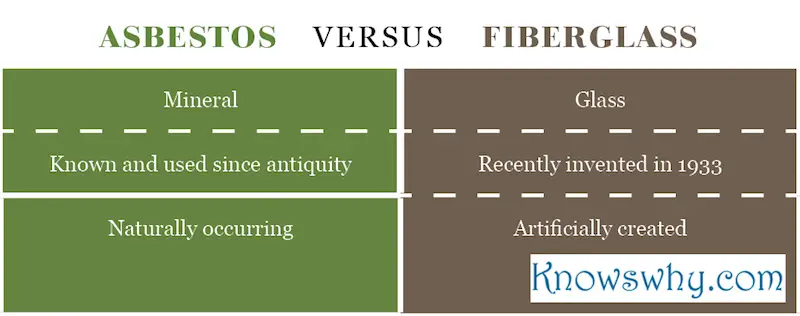
Summary: Gist of Asbestos vs. Fiberglass
Asbestos is an elongated needle-like mineral type that comes in a variety of amphibole and serpentine forms. It is melts at high temperatures and is very durable. It is used for insulation and many other purposes within human civilization and has been used since antiquity. Fiberglass is a type of glass that is shaped in such a way that it forms long, thin, threadlike strands of glass creating a wool like substance which can also be made into a more consolidated material. It is often used for insulation. Asbestos and fiberglass are similar in that they are both silicate, wool-like, and used in insulation. They differ in that asbestos is a naturally occurring mineral that has been known since antiquity whereas fiberglass is an artificial substance made from silica glass that was first manufactured in 1933.
Author: Caleb Strom
Caleb Strom has a B.SC. in earth science from the University of California San Diego and is currently a graduate student in geological sciences at California State Polytechnic University Pomona. He has done scientific research in planetary science at the Scripps Institution of Oceanography and astrophysics at the Center for Astrophysics and Space Science at UC San Diego.

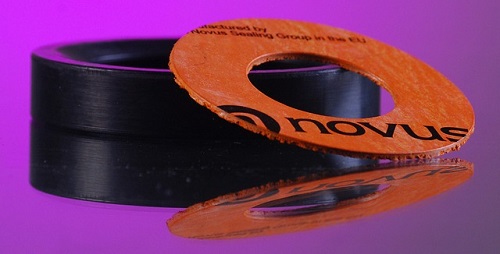


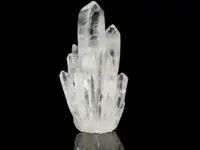







Leave a Reply